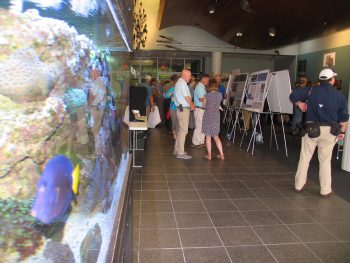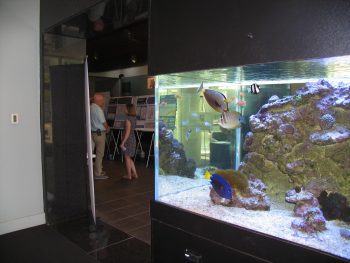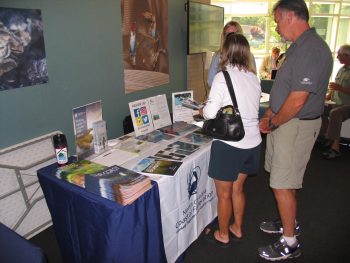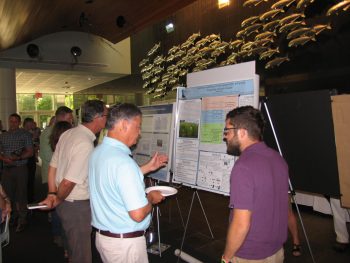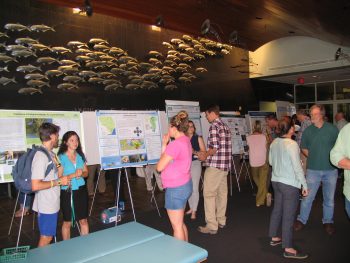The North Carolina Coastal Federation and partners unveiled the Lower Cape Fear River Blueprint on Tuesday at the UNC-Wilmington Center for Marine Science.
Approximately 120 people attended the Lower Cape Fear River Blueprint Open House, where they learned more about the goals of the blueprint, current research and programs focused on the Lower Cape Fear Region, and current research and pending legislation around GenX and other emerging contaminants in the Cape Fear River.
The Lower Cape Fear River Blueprint is a collaborative planning effort, led by the federation, to protect, manage and restore the important estuarine and riverine natural resources of the Lower Cape Fear River. It focuses on four goals:
- Protection and restoration of water quality.
- Resilient living shorelines that protect water quality and natural estuarine function and provide thriving habitat for fish and wildlife.
- Oyster habitats that thrive and support vibrant fisheries, good water quality and resilient estuarine shorelines.
- Protection and preservation of native coastal wetland populations that are free of invasive species Phragmites australis.
“This plan will help the lower Cape Fear River become more of a priority for the region. It is one of the most beautiful areas within our region, and it’s in need of some help to make sure the river’s water quality and unique habitats remain protected,” said Tracy Skrabal, coastal scientist at the federation.
The Blueprint builds off the work of the organizations Cape Fear Arch and Cape Fear River Partnership. It is supported by The Orton Foundation.
Skrabal presented an overview of the plan at the open house. It can be read in full at nccoast.org/capefearblueprint, where there are also maps and other resources available.
Following Skrabal’s presentation, Dr. Stephen Skrabal from UNC-Wilmington’s Department of Chemistry and Biochemistry provided updates on GenX research within the Cape Fear Region. Recent studies found that GenX is present in sediment in the lower river basin, and that the compound is transported by atmospheric deposition. UNC-Wilmington will now be conducting a year-long study to better understand the degradation process for compound in sediment.
The final presentation was given by Rob Lamme, lobbyist for the federation. Lamme gave an overview of GenX legislation and outlined the long-term priorities for the federation regarding legislative support for better regulation and monitoring of industrial contaminant discharges. The federation favors a strategy that includes more funding to go to the North Carolina Department of Health and Human Services and to the Department of Environmental Quality, as well as the creation of a statewide water quality “early warning” monitoring system for industrial contaminants.
To learn more about the Lower Cape Fear River Blueprint, go to nccoast.org/capefearblueprint. Stay tuned for updates and for more information on the upcoming projects and collaborations.


